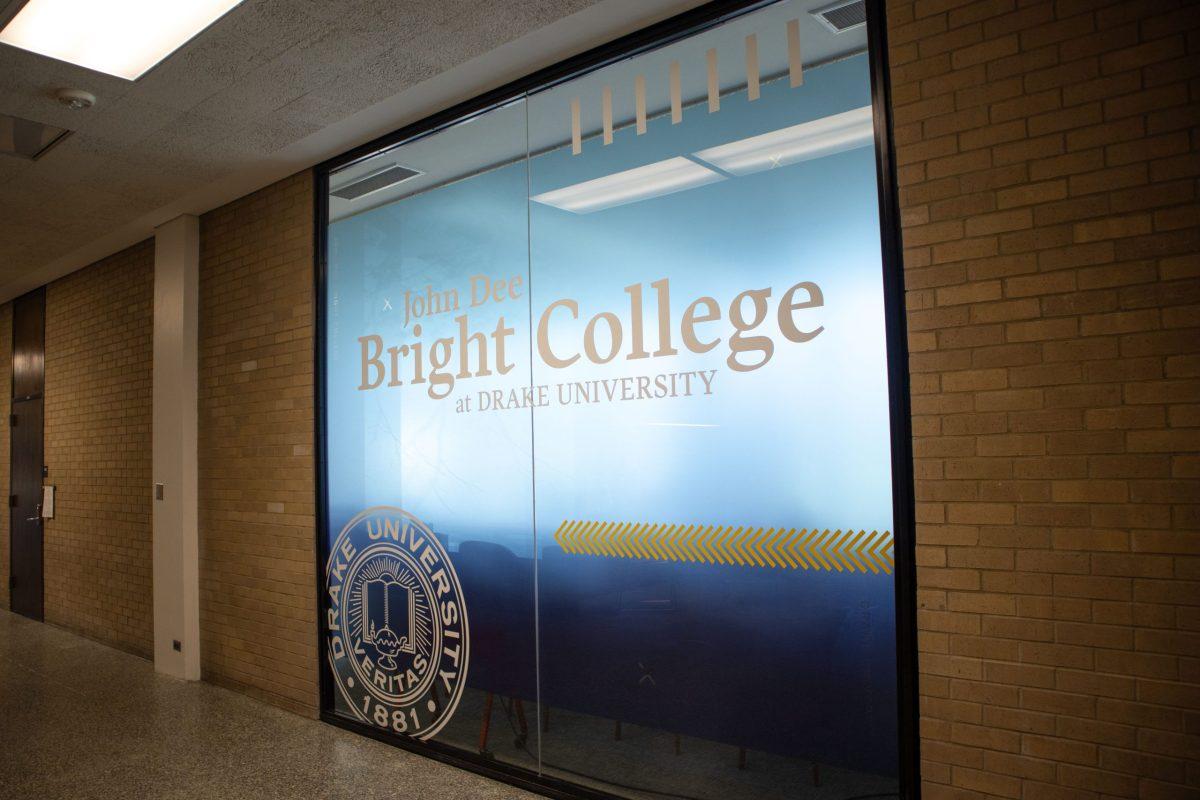In 2018, Bright College Dean Craig Owens worked with a group of 11 faculty to propose an alternative, high-impact version of Drake’s general education curriculum as part of The Ones Campaign. The idea was quickly fast-tracked by President Marty Martin, who wanted to be able to offer standalone two-year associate degrees based on the proposal.
Five years later, in the spring of 2023, Drake University’s John Dee Bright College graduated their first cohort out of the new two-year degree program. The program is now a year into their third cohort, about to graduate their second and are recruiting their fourth class.
“I think one of the things that I pride myself on is the fact that our first graduating class just graduated last May,” Professional and Academic Support Specialist for Bright College John Kippes said.
The most recent data shows that 75% of Bright College students graduate in two years, which is over twice the national three-year completion rate for two-year programs, according to Owens.
Additionally, 50% of the first graduating class continued their education as bachelor degree-seeking students at Drake. Students who have graduated from Bright College have entered every one of the other colleges and schools at Drake, except for the Law School.
The first three cohorts in the Bright College were each in the mid-20s in size. This was the opportunity for the program to achieve “proof of principle,” Owens said.
“Which is to say, to ensure that the curriculum as we designed it and the high-impact learning practices that we put in place in our pedagogy are effective in achieving the educational aims and the professional and ongoing aspirations of our students,” Owens said.
Overall, the accomplishment, retention and graduation rates of Bright College have demonstrated Bright College’s success in achieving the goals set for students, Owens said. Next year, Owens is hoping to start the process of scaling up the number of students the Bright College serves.
“The hope is that we’re able to enroll not just a cohort at the maximum that we’re able to enroll for a cohort, which is around 30 students, but in fact to enroll enough students that we can launch two simultaneous cohorts in the same fall,” Owens said. “We are currently in the personnel planning phase for accommodating those students.”
With this growth, Bright College has had applicants beyond Iowa. The most recent cohort has applicants from Colorado, Texas, New Jersey and other states, Owens said. Additionally, programs like the John Bright College Readiness and Enrichment Day have been used to teach prospective students about skill development and the value of going to college.
“Those kinds of efforts, not just to recruit students from a sales point of view but to really demonstrate the value of what higher education generally and what a Drake education offers, have been some of the key ways that we’ve ramped up and engaged with potential students,” Owens said.
Bright College Student Senator Samra Aksamovic believes the Bright College is making significant steps toward achieving its goals. While there are areas for improvement, the Bright College is capable of achieving even greater success in future years, Aksamovic said.
“Bright College has expanded its presence on campus, hosting events and academic programs that cater to a diverse range of student interests. This increased engagement has fostered a stronger sense of community within Bright College, with students actively participating in college activities and initiatives,” Aksamovic said.
When looking at colleges, Aksamovic’s dream school was Drake. The Bright College offered a specialized two-year degree program that aligned perfectly with her academic and career goals.
“Ultimately, my decision to pursue a degree at Bright College was driven by the perfect combination of academic excellence, practical experience and a supportive community that the college offered,” Aksamovic said. “I knew that by choosing Bright College, I would be setting myself up for success both academically and professionally.”
Kippes attributes the growth of Bright College to leadership’s ability to constantly assess and reevaluate the program in weekly meetings and faculty meetings. Kippes personally receives a significant amount of direct feedback from students that he takes into consideration with his role.
“It’s really neat because every day we’re talking about how do we change this and what’s going right and changing things around,” Kippes said. “First of all growing the numbers, but also looking at things like how do we bolster the practicum, which is their last semester at Bright? How do we be very intentional about their internships?”
In addition to increasing student numbers, Kippes anticipates other growth initiatives in the program in the near future. One of these projects is creating pathways for students to finish a bachelor’s degree at Drake in two years after graduating from Bright College. Students can take up to four credits per semester outside of the Bright College, which Kippes uses as a tool.
“Working with faculty [and] working with advisors to say, ‘Hey this student is interested in getting a business degree. How do they jumpstart that?’” Kippes said. “Then, they can get into an accounting class their second semester at Bright. [It’s] a lot of collaboration, a lot of working with other areas of the University.
Owens also has other programs in the works to help support student success and transitions after Bright College, including the development of universal professional competencies in health-science-related fields. Bright College has also identified a student interest in health-sciences-related fields learning in the curriculum.
“Without saying more than I’m authorized to say at this moment, we’re going to be excited to announce some key business higher-ed partnerships to support our student professionalization,” Owens said.
During Aksamovic’s term as senator, she has worked to promote the visibility of the Bright College, securing merchandise placement for Bright College merch in the Bulldog Shop and organizing various events to engage students and raise awareness. Moving forward, she would like to see Bright College add a peer mentorship program.
“Looking ahead, my goals for Bright College involve further strengthening our community ties and increasing our visibility on campus. I aim to continue organizing events that foster a sense of belonging among students and showcase the unique opportunities offered by Bright College” Aksamovic said.
Kippes and Owens both attribute the success of Bright College to the program’s ability to see students as whole humans, rather than just students. The structure of the program is very intentionally designed to accommodate students with full-time jobs, family obligations and other commitments.
“[Bright College students] encounter a lot of barriers to succeed,” Kippes said. “That’s why this program exists. It’s for students that maybe felt that the education door was shut for them. What that means is these students are working multiple jobs, and they are having many different life barriers to succeed.”
Ultimately, Owens believes that the success of Bright College reflects the legacy of John D. Bright — the namesake of the program — and his success as a student athlete at Drake.
“Whenever we talk about [Bright], I think it’s important to acknowledge both the student and the athlete part of what he did, both his commitment to success on the field and on the court and his commitment to advancing life-long learning for himself and for the students he worked with, and to remind ourselves that those two things aren’t separate,” Owens said. “The type of drive, determination, leadership, mental acuity that it takes to win games is exactly what it takes to succeed in the classroom as well.”








